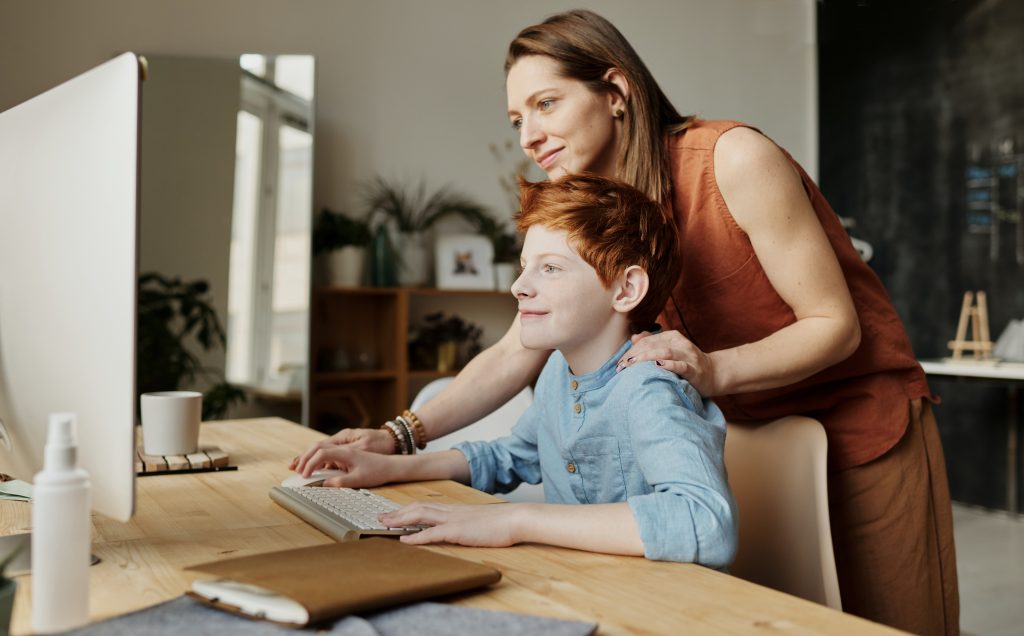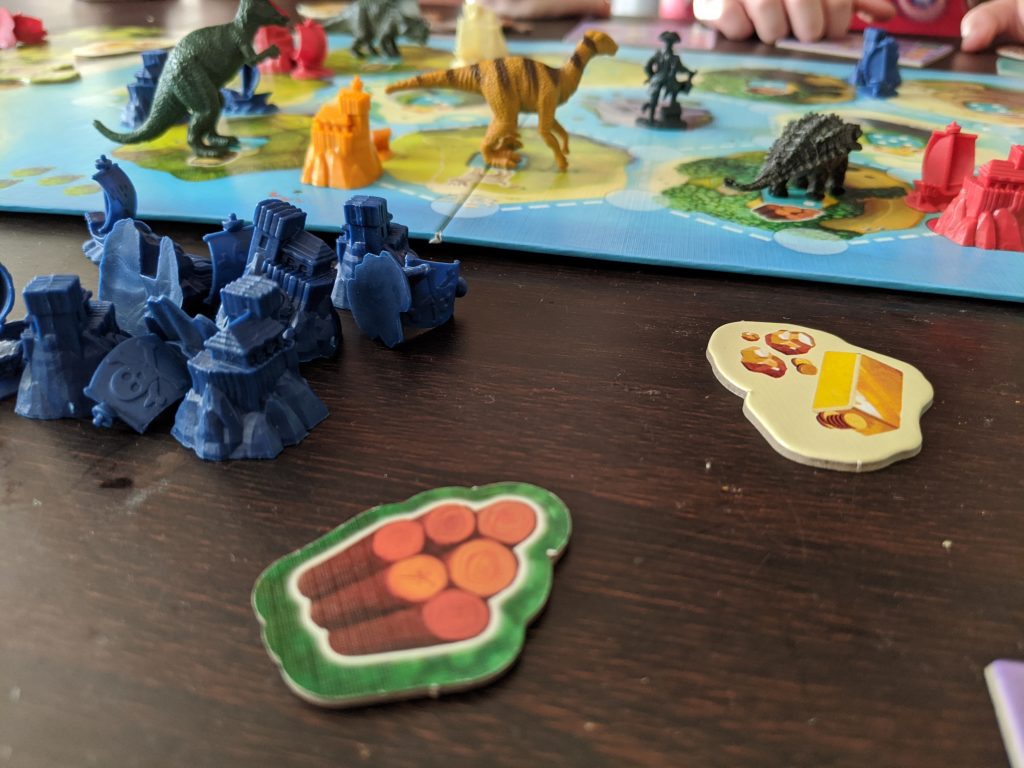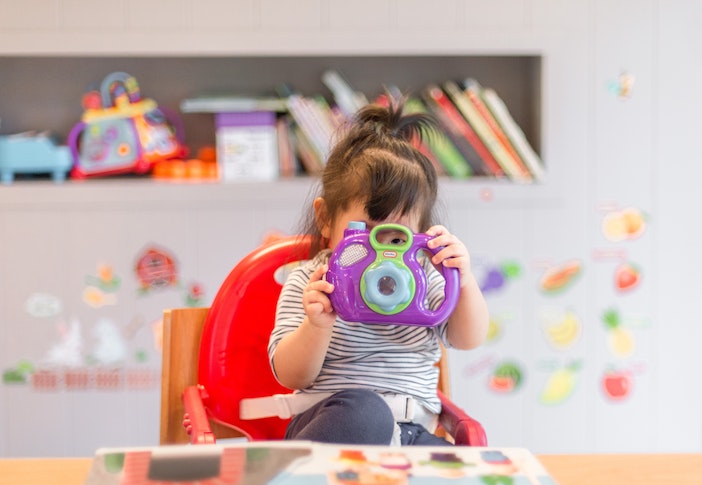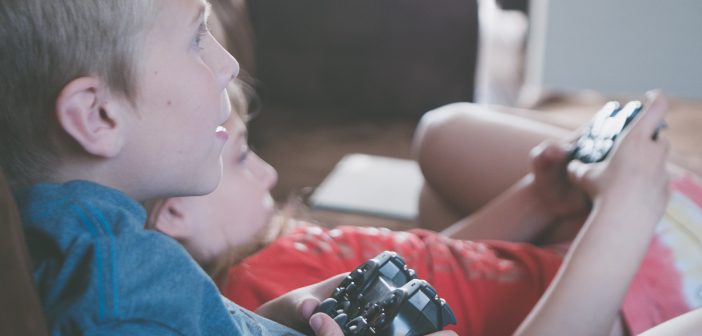Screen time was a hot topic before 2020, but now it is everywhere. Since school went online last winter, screens became a necessity and not a preference. In fact, computer sales rose between five and 17% for the biggest companies according to Forbes, although they don’t expect the increases to continue as it was just for the short-term needs of online learning. Even though we eased back to school and away from online learning this fall, there is almost no way to avoid screen time of any sort. Even when kids aren’t doing online learning, their homework is half online.
If you aren’t totally against screen time and just need it in moderation, there are a few tactics to try. As with any type of parenting “advice,” these are suggestions based on other families’ experiences, and you shouldn’t feel guilty if the one you wish would work for your kids doesn’t. People are different, situations are different, what you can mentally handle is different. Think of it like potty training: You might want to do the “three days and done” method, but your kids have other ideas. The important thing is that you stick with it, whichever method you choose. And please don’t take the fact that I wrote this article as evidence that I have it all figured out either. What works for my family now may get turned on its head next week! So best to have a few ideas in your back pocket:

Lock it up but don’t throw away the key
Cold Turkey
Beijing expat mom Tara Gillan got to a point at the beginning of this summer where she didn’t think she had any other option. After months of online learning with her nine and 11-year-old, they’d tried setting boundaries but she felt the devices were dictating her children’s choices. They consistently chose games over family time or playdates and Tara had a realization that she just had to remove the obsession from her kids’ sights. “I gathered up all our devices and locked them away in my office,” she said. “They just had to go, away from their temptation. Both my sons had a month with no devices in the house. In the beginning, there was a lot of “I’m bored” but that subsided after a few days. Bored is good! It allowed my children to have quiet and calm moments, generated creativity as they needed to entertain themselves, and they had the choice to make their own decisions on how to spend their time.”

20 Minutes at a Time
This was our way. As proud as I was for my three-year-old to master Animal Crossing and Super Mario Maker 2 in quarantine (eye roll), he was way too attached to his games. My six-year-old played but mostly out of boredom. Once we were out of all our quarantines and could leave the house, it was very apparent that our youngest needed structure.
Rather than eliminate his quarantine coping mechanism completely, which might have worked if he was older, I talked to both of them and started limiting their time on it. They got 20 minutes before noon and 20 minutes while I made dinner. It was hard at first, but as long as I gave them fair warnings and counted down the time until they had to stop, meltdowns were at a minimum. Occasionally they’d bargain for more time and sometimes I’d give it, but those were exceptions. One other known exception was if I had a Zoom meeting; then they could play or watch curated videos for the hour I was on the call. But as long as we were open about how much time they got and the reason, and I stuck to my word, they went along with it. Now that school started, they have only asked to play video games a few times, and that was if we could all play as a family.

Set up Parental Controls
One Mom of a seven-year-old who asked to remain anonymous says they use strict parent controls on their daughter’s iPad, and “even if the restrictions are turned off there are time limits on specific apps for how long she can play them. Epic and Sora are always allowed because we want to encourage reading but we limit the games and Netflix to only short times, usually on weekends.”
That’s also how Gillan returned her son’s devices into their lives: with strict boundaries. “The children do have their laptops back now, [on]weekdays for school but with parental software installed.” I found some parental controls for games clunky but appreciate the ones where an alarm for the time limits go off on my phone and their device. I also use website blockers so they can watch their favorite gamers play Minecraft, but not Fortnite or Five Nights at Freddie’s, for example. (It does get tricky when gamers build Fortnite inside of Minecraft, so keep a keen eye.)
I was able to come to an agreement with my oldest on his online video viewing: he either only watches the kids’ version or I use website blockers and we talk through why it isn’t appropriate for him yet. Explaining why we don’t want him to watch or play certain content has put some of the responsibility for keeping his screen time on his own critical thinking skills, and at least once a week he pulls me over to review a video and discuss what they’re doing in it.

Get a Big Clock
This was honestly a gamechanger for us. If you don’t have a clock on the wall, get a nice big one with numbers on it and hang it for everyone to see. Showing kids how much time they have and exactly when their screen time will end makes it more concrete to them. My youngest confused seconds with minutes, because seconds are an easier way for him to quantify time, as it’s just counting. The clock helped him understand that I was giving him way more time to play than he thought I was and has also turned into a nice tool to teach multiplication: how many seconds are in twenty minutes? To a four-year-old, 1,200 seconds is a lot of time!

Make a Rewards System
Mom Weslyna Griffith has three kids aged 15, 13, and two and a half. She offers them reward points, so “each chore done is one to two points and accumulated points equal screen time.” She’s quick to specify that it only works for her older kids though, so she uses other methods to help her toddler regulate his screen time.
A simpler method for screen time lies in the art of negotiation. They ask for their screen time and a parent can set milestones before a device can be turned on: Put all of your toys away first or put your clean clothes away. After school, we have no screen time until their lunch containers are in the sink and homework is out of their bag, for instance. Whether formal or informal rewards work for your child, it can help express that screen time is a privilege.

Here the kids merged Catan Jr with Dinosaur Escape
Give Them an Alternative
I did it when I quit smoking, the kids did it when I weaned them off bottles: for a while, people need a not-as-addictive alternative. We transitioned their love of gaming towards board games. There are lots of good ones for all ages! Before that, it was card games. As with most activities, you need to start by playing with them, to show them the ropes. Once they get the idea, however, it’s shocking how independent kids can be, which can give you the precious time you need when they’re usually watching or playing on a screen. The key here is to not care if they’re playing by the real rules or if they make up their own, as long as their rules are fair to all players, and they put all the pieces away at the end of the playtime.

Don’t Default to TV
We used to treat them to some “Scooby-Doo” or another cartoon while they woke up and got ready for school. The longer they’re in school, the less they immediately turn on the television in the morning. They wake up and I tell them how long they have to eat breakfast, how long until we get them dressed, etc. (there’s that clock again) and that prompts them more to play with each other than watching a show. Once or twice a week they will want a show, but it isn’t nearly as often and that’s been their choice.

No one wants to be a Gollum
Show Them Lord of the Rings
Seriously. When our oldest was introduced to Gollum and saw how The One Ring affected Frodo’s brain to make him make bad choices (it helps that he’s really into neurons right now), he kept asking questions and we answered them all. Neither my husband nor I outright said that the addiction of the ring is like the addiction of video games; that’s a connection he made himself. Ever since then, he sets his own screen time limits and tells people how feeling like you need something that badly is not good for you and you’ll make bad choices.
If you’re not Tolkien people, or that’s a little too intense, there are lots of other kids’ stories where the characters struggle with an obsession. Sometimes they just need to see it in a different context to understand its impact.
KEEP READING: Remotely Controlled Kids: The Real Impact of Too Much Screen Time
Photos: pexels, goodfreephotos, Cindy Marie Jenkins




